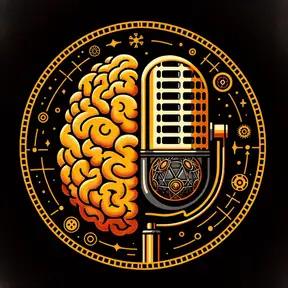Swifties and K-Dot Nation: The Psychology of Concert Crowds
Crowd Psychology in Concerts: Taylor Swift’s Eras Tour vs. Kendrick Lamar’s Pop-Out Event
In this episode of PsyberSpace, host Leslie Poston digs into the psychology of crowds at music concerts, focusing on Taylor Swift’s Eras tour and Kendrick Lamar’s pop-out concert. The discussion covers the foundational concepts of crowd psychology, including theories by Gustave Le Bon, and extends to modern psychological and sociological studies. Swift's meticulously choreographed concerts create a purchasable shared experience, while Lamar’s performances tap into cultural authenticity and community pride. The episode explores emotional contagion, deindividuation, place identity, musical entrainment, and the commercial aspects of fan culture. It also considers how digital engagement and hidden meanings enhance fan experiences. Whether through pop anthems or hip hop verses, the powerful force of music in shaping collective behavior and individual identity is examined in-depth. The episode also acknowledges the contributions of various researchers and journalists, offering rich insights into the profound impact of concert settings on crowd behavior.
00:00 Introduction to Concert Psychology
00:55 Foundations of Crowd Psychology
02:03 Taylor Swift's Eras Tour: A Case Study
02:57 Kendrick Lamar's Pop-Out Concert: A Case Study
04:09 Emotional Contagion in Concerts
06:59 Identity and Belonging in Concert Crowds
09:30 The Role of Concert Settings
12:18 Musical Entrainment and Crowd Behavior
14:29 Commercial Aspects of Fan Culture
16:55 Digital Engagement and Networked Publics
19:01 Semiotics and Hidden Meanings in Fandom
24:36 Conclusion: The Power of Music and Crowd Psychology
Resources:
In this episode of PsyberSpace, host Leslie Poston digs into the psychology of crowds at music concerts, focusing on Taylor Swift’s Eras tour and Kendrick Lamar’s pop-out concert. The discussion covers the foundational concepts of crowd psychology, including theories by Gustave Le Bon, and extends to modern psychological and sociological studies. Swift's meticulously choreographed concerts create a purchasable shared experience, while Lamar’s performances tap into cultural authenticity and community pride. The episode explores emotional contagion, deindividuation, place identity, musical entrainment, and the commercial aspects of fan culture. It also considers how digital engagement and hidden meanings enhance fan experiences. Whether through pop anthems or hip hop verses, the powerful force of music in shaping collective behavior and individual identity is examined in-depth. The episode also acknowledges the contributions of various researchers and journalists, offering rich insights into the profound impact of concert settings on crowd behavior.
00:00 Introduction to Concert Psychology
00:55 Foundations of Crowd Psychology
02:03 Taylor Swift's Eras Tour: A Case Study
02:57 Kendrick Lamar's Pop-Out Concert: A Case Study
04:09 Emotional Contagion in Concerts
06:59 Identity and Belonging in Concert Crowds
09:30 The Role of Concert Settings
12:18 Musical Entrainment and Crowd Behavior
14:29 Commercial Aspects of Fan Culture
16:55 Digital Engagement and Networked Publics
19:01 Semiotics and Hidden Meanings in Fandom
24:36 Conclusion: The Power of Music and Crowd Psychology
Resources:
Arnould, E. J., & Thompson, C. J. (2005). Consumer culture theory (CCT): Twenty years of research. Journal of Consumer Research, 31(4), 868-882. https://academic.oup.com/jcr/article-abstract/31/4/868/1812998
Assaly, R. (2024, June 20). Kendrick Lamar basks in Drake beef victory, plays diss track 'Not Like Us' five times in a row at star-studded Juneteenth concert. Toronto Star. https://www.thestar.com/entertainment/music/kendrick-lamar-basks-in-drake-beef-victory-plays-diss-track-not-like-us-five-times/article_4ce45a50-2f0e-11ef-a703-8f82cc640a.html
Barker, R. G. (1968). Ecological psychology: Concepts and methods for studying the environment of human behavior. Stanford University Press.
Barthes, R. (1967). The death of the author. Aspen, 5-6. http://www.ubu.com/aspen/aspen5and6/threeEssays.html#barthes
Bose, P. (2024, May 27). Your ultimate cheat sheet to Taylor Swift's Eras Tour. Prestige Online. https://www.prestigeonline.com/sg/lifestyle/culture-plus-entertainment/taylor-swifts-eras-tour-preparations/
Bourdieu, P. (1984). Distinction: A social critique of the judgement of taste. Harvard University Press.
Bourdieu, P. (1986). The forms of capital. In J. Richardson (Ed.), Handbook of Theory and Research for the Sociology of Education (pp. 241-258). Greenwood.
boyd, d. (2010). Social Network Sites as Networked Publics: Affordances, Dynamics, and Implications. In Z. Papacharissi (Ed.), Networked Self: Identity, Community, and Culture on Social Network Sites (pp. 39-58). Routledge.
Buller, L. (2023, November 7). Local, cultural impacts of Taylor Swift's The Eras Tour. The Bethel Collegian. https://collegian.bethelks.edu/p/local-cultural-impacts-of-taylor
Clayton, M., Sager, R., & Will, U. (2005). In time with the music: The concept of entrainment and its significance for ethnomusicology. European Meetings in Ethnomusicology, 11, 3-142.
Drury, J., & Reicher, S. (2000). Collective action and psychological change: The emergence of new social identities. British Journal of Social Psychology, 39(4), 579-604. https://bpspsychub.onlinelibrary.wiley.com/doi/abs/10.1348/014466600164642
Durkheim, É. (1995). The elementary forms of religious life (K. E. Fields, Trans.). Free Press. (Original work published 1912)
Eco, U. (1976). A theory of semiotics. Indiana University Press.
Gall, C. (2024, March 21). The cultural impact of Taylor Swift's The Eras Tour. StoryMaps. https://storymaps.com/stories/8448a9e9b67b4b0988aa9a2194d83ace
Gibson, J. J. (1979). The ecological approach to visual perception. Houghton Mifflin.
Gray, J. (2003). New audiences, new textualities: Anti-fans and non-fans. International Journal of Cultural Studies, 6(1), 64-81. https://journals.sagepub.com/doi/10.1177/1367877903006001004
Hall, S. (1973). Encoding and decoding in the television discourse. University of Birmingham.
Hatfield, E., Cacioppo, J. T., & Rapson, R. L. (1993). Emotional contagion. Current Directions in Psychological Science, 2(3), 96-100. https://journals.sagepub.com/doi/10.1111/1467-8721.ep10770953
Jenkins, H. (2006). Fans, bloggers, and gamers: Exploring participatory culture. New York University Press.
Launay, J., Tarr, B., & Dunbar, R. I. M. (2016). Synchrony as an adaptive mechanism for large-scale human social bonding. Ethology, 122(10), 779-789. https://onlinelibrary.wiley.com/doi/full/10.1111/eth.12528
Le Bon, G. (1895). The crowd: A study of the popular mind. T. Fisher Unwin.
McNab, K. (2024, June 21). Kendrick Lamar's Triumphant Pop Out Got Complicated With That Dr. Dre Appearance. Teen Vogue. https://www.teenvogue.com/story/kendrick-lamar-triumphant-pop-out-complicated-with-dr-dre-appearance
Mittell, J. (2015). Complex TV: The poetics of contemporary television storytelling. NYU Press.
Muñiz, A. M., & O'Guinn, T. C. (2001). Brand community. Journal of Consumer Research, 27(4), 412-432. https://academic.oup.com/jcr/article-abstract/27/4/412/1810411
Perez, J. (2023, July 24). The Eras Tour: How I finally embraced being a Swiftie. No Laying Up. https://nolayingup.com/blog/the-eras-tour-how-i-finally-embraced-being-a-swiftie
Polletta, F., & Jasper, J. M. (2001). Collective identity and social movements. Annual Review of Sociology, 27(1), 283-305. https://www.annualreviews.org/doi/abs/10.1146/annurev.soc.27.1.283
Proshansky, H. M., Fabian, A. K., & Kaminoff, R. (1983). Place-identity: Physical world socialization of the self. Journal of Environmental Psychology, 3(1), 57-83. https://www.sciencedirect.com/science/article/abs/pii/S0272494483800218
Pulitzer Prize Board. (2018). The 2018 Pulitzer Prize Winner in Music. https://www.pulitzer.org/winners/kendrick-lamar
Reicher, S. (2001). The psychology of crowd dynamics. In M. A. Hogg & R. S. Tindale (Eds.), Blackwell handbook of social psychology: Group processes (pp. 182-208). Blackwell.
Rolling Stone. (2022, October 7). Taylor Swift's 'Midnights Mayhem': All the Track Titles She's Revealed (So Far). https://www.rollingstone.com/music/music-news/taylor-swift-midnights-track-list-1234604110/
Sawyer, R. K. (2006). Group creativity: Musical performance and collaboration. Psychology of Music, 34(2), 148-165. https://journals.sagepub.com/doi/10.1177/0305735606061850
Silverstein, M. (2003). Indexical order and the dialectics of sociolinguistic life. Language & Communication, 23(3-4), 193-229. https://www.sciencedirect.com/science/article/abs/pii/S0271530903000132
Singleton, T. (2018) Digital Fandemonium Part 1. Retrieved from https://medium.com/@TSingletonSays/digital-fandemonium-part-i-understanding-the-psychology-behind-fan-identification-and-consumer-fb05731df31f
Stevens, A. (2024, March 15). 13 Best Taylor Swift Easter Eggs & References In The Eras Tour Movie. Screen Rant. https://screenrant.com/taylor-swift-eras-tour-movie-easter-eggs-references-songs/
Tajfel, H., & Turner, J. C. (1979). An integrative theory of intergroup conflict. In W. G. Austin & S. Worchel (Eds.), The social psychology of intergroup relations (pp. 33-47). Brooks/Cole.
Thompson, P. A. (2024, June 20). Kendrick Lamar's Pop Out Concert: A West Coast Reunion and Unforgettable Haters' Ball. Pitchfork. https://pitchfork.com/thepitch/kendrick-lamar-pop-out-concert-a-west-coast-reunion-and-unforgettable-haters-ball/
Turner, R. H., & Killian, L. M. (1987). Collective behavior (3rd ed.). Prentice-Hall.
Turner, V. (1969). The ritual process: Structure and anti-structure. Aldine Publishing.
Zimbardo, P. G. (1969). The human choice: Individuation, reason, and order versus deindividuation, impulse, and chaos. Nebraska Symposium on Motivation, 17, 237-307.
★ Support this podcast ★
Creators and Guests


